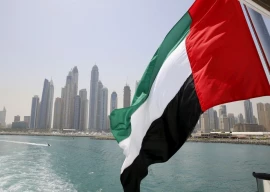
In recent times, we have seen an enormous growth of satellite towns, societies, and urban centres in various cities of Pakistan. These developments signify economic activity in the country which encourages overall growth in associated sectors. Therefore, one may think if there is an integrated approach or even if there is a thought process behind the recent boom.
Cities, by definition, involve many aspects, two of which are governance and administration, and infrastructure. Governance and administration includes regular day-to-day operations of the system and implementation of laws to improve the livelihood of residents. On the other hand, infrastructure comprises roads, bridges, schools, hotels, land use, industries, etc. The development of infrastructure in any city results from the vision and policy of the leader to make a city more prosperous. The vision and policies are usually chalked out into a master plan and yearly plans to enable continued and sustainable growth.
Theoretically, this should be the case for major cities in Pakistan. I, however, failed to understand urban development in many Pakistani cities. The translation of vision into policy, planning, and implementation is nowhere. I wonder how satellite towns, societies, and colonies are planned, designed, approved, and constructed in areas where basic infrastructure such as transportation, electricity, gas, water supply, and sewage and drainage systems, is non-existent. In many cities, projects are even constructed on land not approved for said purpose. Many societies on the city’s outskirts do not even qualify to be considered independent towns and societies.
While teaching an undergraduate module on Building and Infrastructure Appreciation, I have had the opportunity to learn about the vision behind an integrated approach towards infrastructure development in Hong Kong. One is amazed to see how one of the most densely populated cities manages to overcome barriers and develop Infrastructure to improve quality of life.
The city has a comprehensive plan for public housing, road, and rail network for local and regional connectivity, sewage and drainage systems. Moreover, a clear direction can be seen in land planning, country parks, urban greens areas, and residential and commercial areas to ensure sustainable development.
One important lesson that we must learn from Hong Kong is the integrated approach to infrastructure planning and design. For example, a compressive and interconnected network of rail, road transport, shopping malls, offices, and residential plazas is designed to minimise connectivity issues, thus leading a resident to enjoy a hassle-free movement and life compared to most cities in Pakistan.
I wonder what our leaders, policymakers and bureaucrats are doing to address some of the fundamental issues in our cities because there is no clear vision, plan or direction for future urban developments. Let’s take the example of Karachi where we are not short of problems including a shortage of electricity, drinking water, urban sanitation, roads, public transport, parks and others. Yet, we hear that the government has done this and that, and it will somehow improve the situation. What we don’t understand is that addressing the root causes of these problems could turn things around. For this, the city administrations may develop master plans for future developments, yearly plans to monitor progress, and accommodate changes resulting from the on-ground situation.
Published in The Express Tribune, July 25th, 2021.
Like Opinion & Editorial on Facebook, follow @ETOpEd on Twitter to receive all updates on all our daily pieces.


















COMMENTS
Comments are moderated and generally will be posted if they are on-topic and not abusive.
For more information, please see our Comments FAQ